IN THE ZONE FOR LEARNING STUDENT RESPONSE CHECKLIST
A sensory lens to help educators consider how the processing of sensory information impacts your student’s level of alertness, function, participation and learning
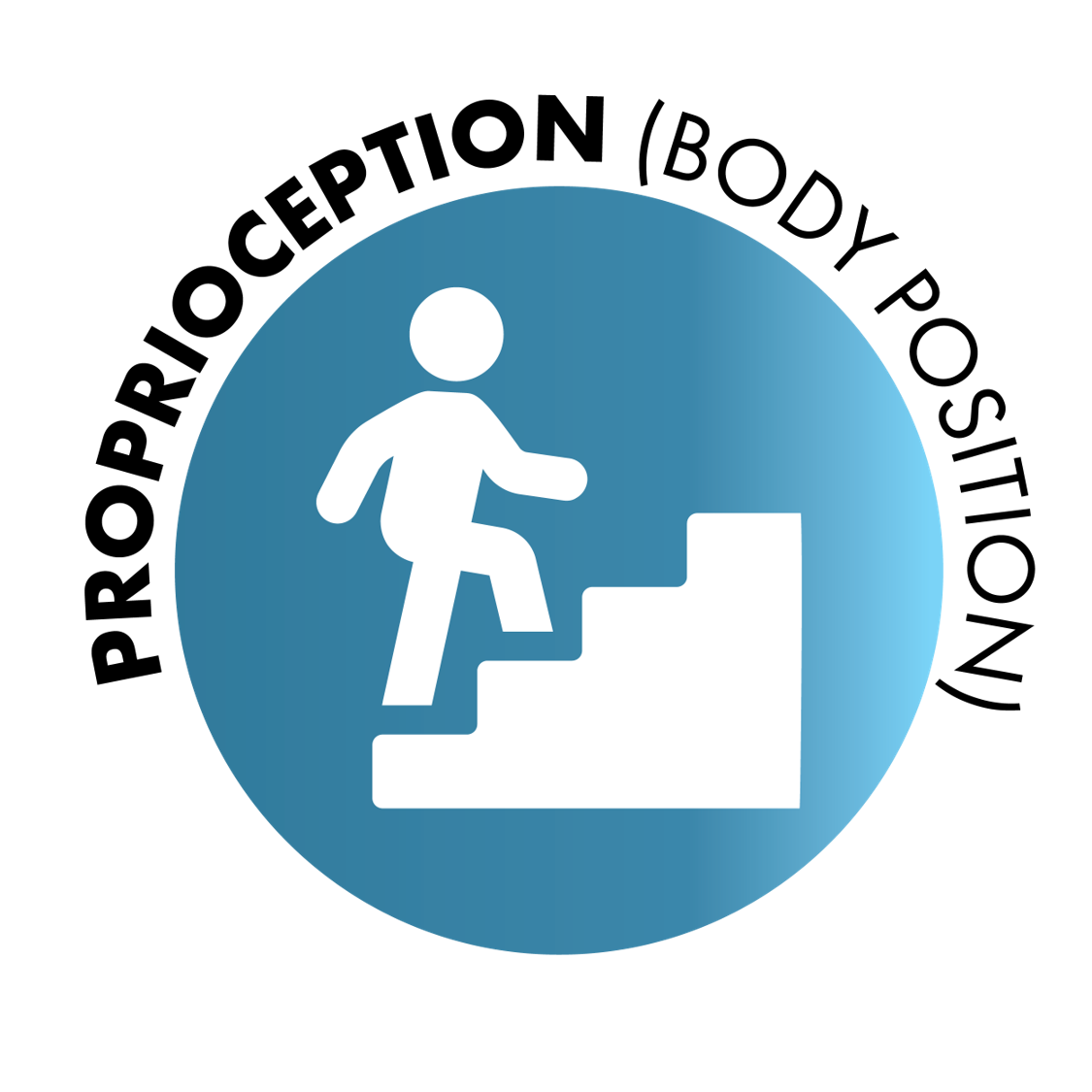 | LEARNING THROUGH BODY POSITION AND AWARENESS - PROPRIOCEPTION |
OVER responsive state-
over-registering sensory information, responding with sensitivity, avoidance, defensiveness, fight/flight/fright or freeze
over-registering sensory information, responding with sensitivity, avoidance, defensiveness, fight/flight/fright or freeze
Note: It is rare to find a person with sensitivity to proprioceptive input. Most people seek it out as a feel-good sensation and regulating tool. Proprioceptive input through heavy muscle work is the most powerful strategy for most students with sensory processing challenges.
This student may:
| VF | F | S | N | ||
| 1 | display discomfort or avoid weight-bearing positions e.g. standing, kneeling. | ||||
| 2 | display discomfort when joints/body are moved by others e.g. when physically assisted or prompted (this is different to being sensitive to tactile input). | ||||
| 3 | avoid activities that involve heavy muscle work (note: this could be also due to low muscle tone, poor strength or coordination of movement rather than sensitivity to proprioceptive input). | ||||
| 4 | avoid or pull away if joints are squeezed together or compressed (e.g. avoid carrying heavy items or push/pull activities – however, this could be due to poor muscle strength or coordination of movement). |
UNDER responsive state -
low registration of sensory input, slow or low response, "zoned out"
low registration of sensory input, slow or low response, "zoned out"
Note: Your student's responses in this category may be due to poor strength or coordination of movement. Tick the boxes that apply below and refer to the Meaningful Movement Module for more information.
This student may:
| VF | F | S | N | ||
| 5 | not notice or seem unaware of objects in their hands (e.g. pencil, block, eating utensils). | ||||
| 6 | break objects easily or use too much force when manipulating objects or moving their own bodies. | ||||
| 7 | lean on people or furniture. | ||||
| 8 | slump when sitting/have poor posture/seem floppy or weak (possibly due to having low muscle tone). | ||||
| 9 | appear clumsy, often trip over or bump into objects or people. | ||||
| 10 | fail to catch themselves or stop themselves from falling (note:this could also be due to under-developed protective reflexes). | ||||
| 11 | display lack of body awareness (either when stationary or moving) and within their environment (e.g. not notice knocking over an object). |
Seeking the zone -
seeking/craving sensory input to calm down or increase alertness or to maintain a focussed state
seeking/craving sensory input to calm down or increase alertness or to maintain a focussed state
This student may:
| VF | F | S | N | ||
| 12 | seek out heavy muscle work (climb, push, pull, lift, drag). | ||||
| 13 | crave movement and input to muscles and joints (e.g. stomp, walk heavily, run, bounce, jump, flaps hands). | ||||
| 14 | crave input through being squeezed, squashed, leaning against others (this can be calming and organising input). | ||||
| 15 | push, hit, kick, bump, bite, scratch, bang self or objects in order to get more input through the joints and muscles of the body. | ||||
| 16 | seek out tight, squashed space. | ||||
| 17 | move furniture, lift and carry objects to get more input to the joints and muscles. | ||||
| 18 | seem to enjoy bumping into people or objects or purposely fall. | ||||
| 19 | grasp objects too tightly for more feedback through joints and muscles. | ||||
| 20 | use too much force or be rough, break objects and seem destructive without meaning to be (e.g. slams door, breaks toys etc.). | ||||
| 21 | walk on tip toes, bounce when walking and/or lock out knee joints in order to get more feedback through joints. (This item is also in tactile and vestibular sections because it can occur for several reasons). |
This checklist is a guide for teachers. Please consult an Occupational Therapist specialising in sensory processing challenges for formal assessment and intervention of your students with complex needs.
Notes
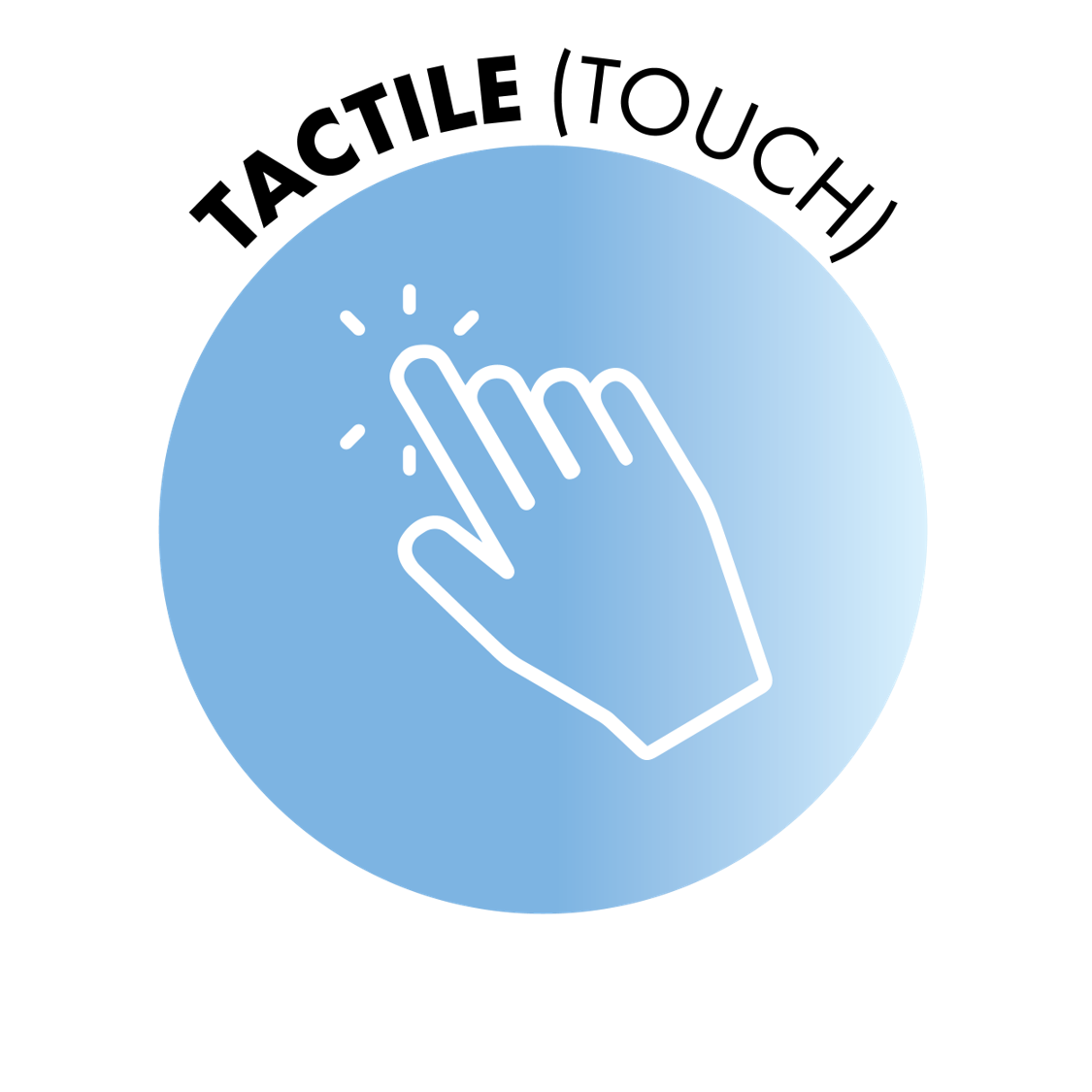 | LEARNING THROUGH TOUCH -TACTILE PROCESSING |
OVER responsive state-
over-registering sensory information, responding with sensitivity, avoidance, defensiveness, fight/flight/fright or freeze
over-registering sensory information, responding with sensitivity, avoidance, defensiveness, fight/flight/fright or freeze
This student may:
| VF | F | S | N | ||
| 22 | avoid touching different textures or participating in activities such as craft, messy play, cooking or gardening, be wary, hesitant or distressed. | ||||
| 23 | appear anxious to clean hands or face or change clothes if wet or messy. | ||||
| 24 | appears uncomfortable with light touch (e.g. another student brushing past or touching them or tickling. This can lead to a fright, flight, fight response). | ||||
| 25 | pull away from being touched or refuse physical comfort (may need own space and time to recover rather than hugs or touch). | ||||
| 26 | resist hand-over-hand guidance. | ||||
| 27 | dislikes/ avoids being too close to other students or teachers, may be restless, unsettled or disruptive when lining up or sitting close to other students. | ||||
| 28 | prefers touch on his or her own terms (prefers to be in control and initiate touch). | ||||
| 29 | be fussy about clothing (e.g. may only wear long sleeves even in summer or short sleeves all year round or need tags removed from clothing). | ||||
| 30 | remove clothing or rip or tear clothing if distressed or irritated because the sensation has become overwhelming. | ||||
| 31 | walk on tip toes to limit tactile input to feet, avoid walking barefoot or be fussy about wearing socks and shoes. |
UNDER responsive state -
low registration of sensory input, slow or low response, "zoned out"
low registration of sensory input, slow or low response, "zoned out"
This student may:
| VF | F | S | N | ||
| 32 | be slow to process tactile information or touch cues. | ||||
| 33 | not notice food on face or mess on hands. | ||||
| 34 | not notice when underpants or nappy is soiled or wet, unaware of bowel or bladder motions. | ||||
| 35 | not notice that they are holding an item in their hands. | ||||
| 36 | not notice clothes twisted or ill-fitting. | ||||
| 38 | not notice/be unaware when they are sitting or standing too close to someone else. | ||||
| 39 | not seem to notice painful stimuli (e.g. slow to react to pain, be unaware of cuts and bruises). | ||||
| 40 | not seem to notice temperature (e.g. wears t-shirt in cold weather or jacket in summer). |
Seeking the zone -
seeking/craving sensory input to calm down or increase alertness or to maintain a focussed state
seeking/craving sensory input to calm down or increase alertness or to maintain a focussed state
This student may:
| VF | F | S | N | ||
| 41 | have a strong need to touch furniture, walls, objects, people. | ||||
| 42 | crave certain tactile input and textures (e.g. water, messy activities, bark, twigs, sand, plays with food). | ||||
| 43 | seek out hot or cold surfaces (e.g. the window, fridge or metal objects). | ||||
| 44 | smear faeces or play with wet nappy or spit. | ||||
| 45 | frequently go to the bathroom or bubbler to seek out water. | ||||
| 46 | crave touch, hugs or physical affection. | ||||
| 47 | resort to self-injurious behaviours and not seem to find them painful e.g. punch, hit, pinch or bite self or fall to floor or head bang). This is very complex and serious and could be for several reasons including craving extreme deep pressure touch because it can release “happy neurotransmitters” and help them feel better or release "painkillers" in the brain that can lead to a numbing or euphoric feeling. People with sensory processing challenges can have inaccurate pain perception". | ||||
| 48 | frequently bump into people or objects on purpose. | ||||
| 49 | fidget—flick, twirl, touch objects or people excessively (note: if looking intently, they may also be craving visual and vestibular input). | ||||
| 50 | like to walk barefoot and explore textures and surfaces with feet. |
This checklist is a guide for teachers. Please consult an Occupational Therapist specialising in sensory processing challenges for formal assessment and intervention of your students with complex needs.
Notes
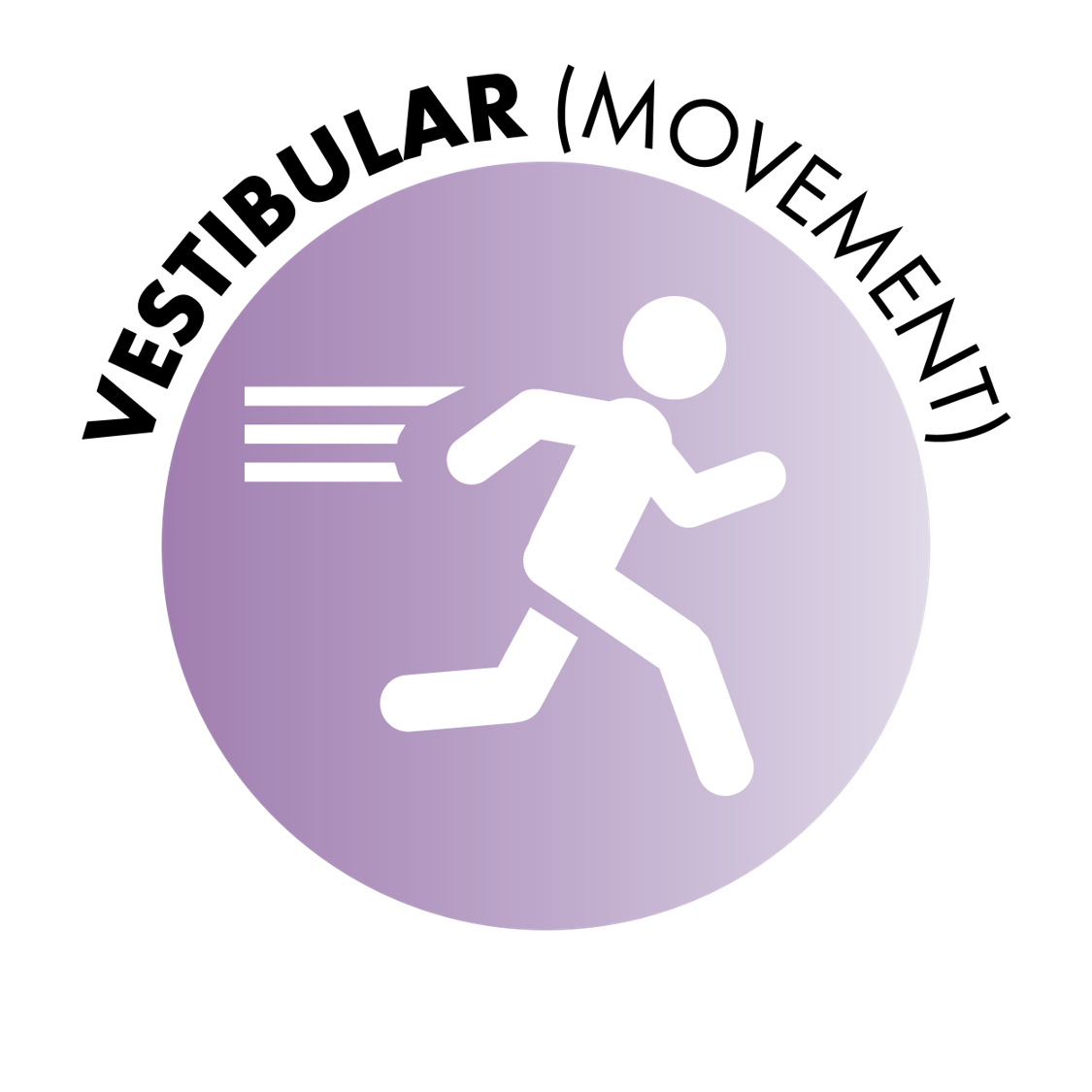 | LEARNING THROUGH MOVEMENT -VESTIBULAR PROCESSING |
OVER responsive state-
over-registering sensory information, responding with sensitivity, avoidance, defensiveness, fight/flight/fright or freeze
over-registering sensory information, responding with sensitivity, avoidance, defensiveness, fight/flight/fright or freeze
This student may:
| VF | F | S | N | ||
| 51 | fear being upside down, tipped sideways, being off balance or when moving backwards (this also applies to a student using a wheelchair who may startle when pushed forward or back without warning or at a fast, sudden pace). | ||||
| 52 | become anxious when feet are not touching the ground (e.g. sitting on the toilet or chair with feet unsupported). | ||||
| 53 | become anxious or avoid slides, swings, spinning, jumping or even dancing. | ||||
| 54 | be anxious about walking up or down inclines or stairs. | ||||
| 55 | be afraid of movement, fear falling or heights, may avoid balance activities. | ||||
| 56 | over-react to small changes in position (e.g. if slightly off balance or stumbles). | ||||
| 57 | get motion sickness easily. | ||||
| 58 | need to be in control of his/her own movement. | ||||
| 59 | startle easily or freeze in shock or drop to ground in fright if unbalanced, bumped or moved without warning. | ||||
| 60 | be afraid of or avoid busy environments where he/she may get jostled or knocked over. |
UNDER responsive state -
low registration of sensory input, slow or low response, "zoned out"
low registration of sensory input, slow or low response, "zoned out"
This student may:
| VF | F | S | N | ||
| 61 | appear not to feel dizzy (e.g. Can spin and swing more than others without being unsteady after or showing rapid eye movement after (Post Rotary Nystagmus)). | ||||
| 62 | experience difficulty maintaining balance and controlling the speed and direction of movement (note: this could also be due to low muscle tone, muscle weakness or a motor planning issue). | ||||
| 63 | be slow to notice they are losing balance or fail to catch themselves when falling (could be due to poor body awareness or poorly integrated protective or postural reflexes). | ||||
| 64 | seem unaware of being moved (e.g. vaguely goes along with the group). | ||||
| 65 | appear lethargic (this student could be often sedentary but can increase alertness when vestibular system is activated by movement e.g. through swinging or jumping). | ||||
| 66 | seem unable to start moving and can therefore appear to be avoiding physical activity (note: this could also be a motor planning issue or difficulty initiating/starting movement). |
Seeking the zone -
seeking/craving sensory input to calm down or increase alertness or to maintain a focussed state
seeking/craving sensory input to calm down or increase alertness or to maintain a focussed state
This student may:
| VF | F | S | N | ||
| 67 | crave certain movement experiences (e.g. jumping, swinging, spinning, hopping, bouncing, running). | ||||
| 68 | seek out gross motor movement and may have a very high tolerance to spinning, jumping, swinging, may not seem to get dizzy. | ||||
| 69 | pace and walk around classroom or playground (but may be able to sit still if focussed on visually motivating or moving objects because the visual input is activating the vestibular system). | ||||
| 70 | fidget, rock, squirm or move in chair or shake head and generally have difficulty sitting still in chair or on floor, may need to keep moving (this may interfere with listening and interacting or it may in fact assist the student to listen and be attentive). | ||||
| 71 | enjoy sensation of falling without regard to safety or play on edge of furniture, balance on walls or beams. | ||||
| 72 | like inverted upside down position (e.g. rolls over gym ball or hangs on tummy over swing and hangs head upside down). | ||||
| 73 | seek extreme movement activities (e.g. spinning in different directions, summersaults). | ||||
| 74 | enjoy running when in open space, may appear to want to be chased (this could be a “flight” response or a way of engaging playfully). |
This checklist is a guide for teachers. Please consult an Occupational Therapist specialising in sensory processing challenges for formal assessment and intervention of your students with complex needs.
Notes
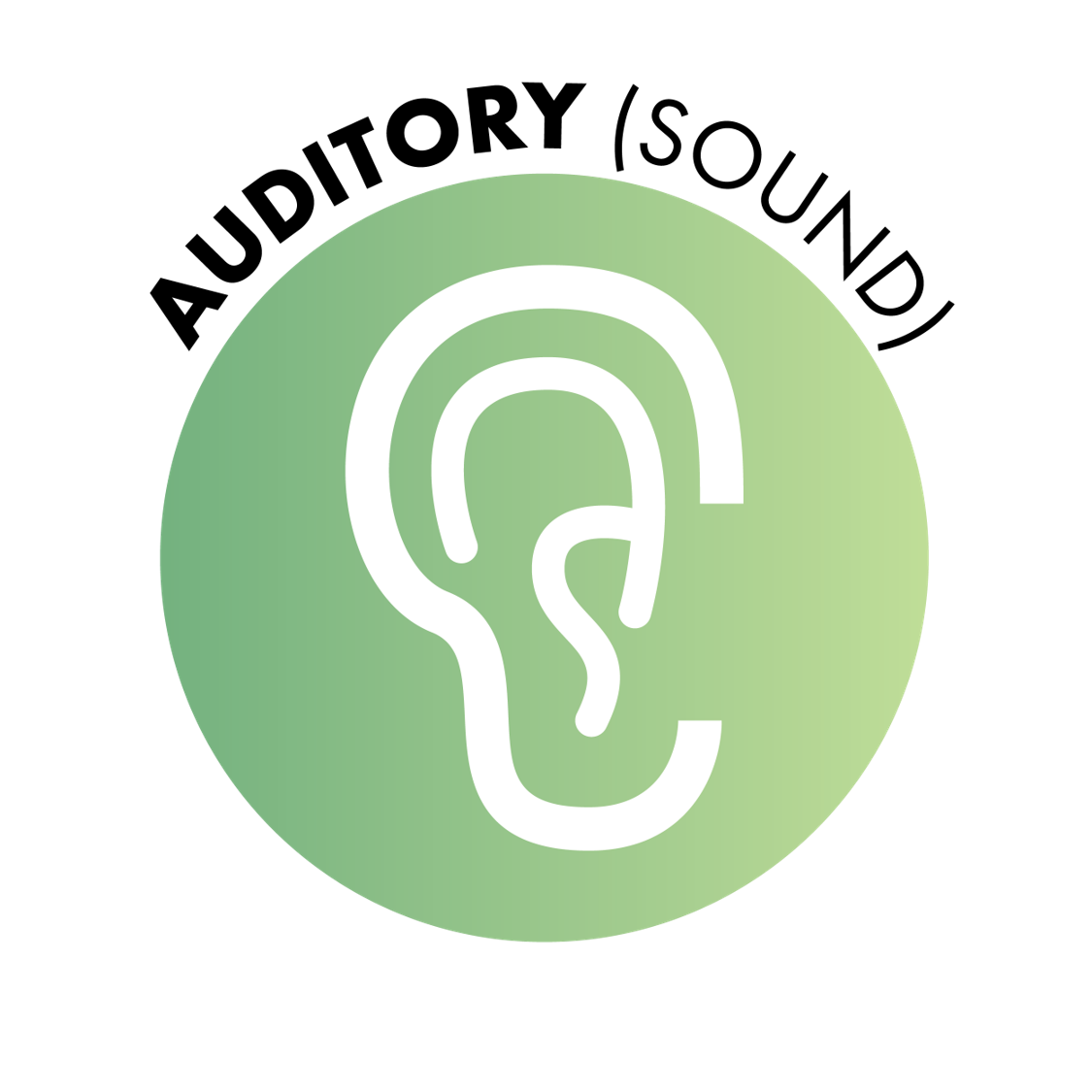 | LEARNING THROUGH SOUND -AUDITORY PROCESSING |
OVER responsive state-
over-registering sensory information, responding with sensitivity, avoidance, defensiveness, fight/flight/fright or freeze
over-registering sensory information, responding with sensitivity, avoidance, defensiveness, fight/flight/fright or freeze
Please note: sound travels through air and bounces off surfaces, changes and distorts. Some students in high alert can over register all these sounds and become sensitive to sound.
Sound also carries a lot of information about different aspects such as: distance (e.g. a bird call), speed (e.g. a motor bike racing past) and size (e.g. a large rumbling truck). these complex aspects can trigger a student's protective system and send them into flight/fight/fright-freeze.
Sound also carries a lot of information about different aspects such as: distance (e.g. a bird call), speed (e.g. a motor bike racing past) and size (e.g. a large rumbling truck). these complex aspects can trigger a student's protective system and send them into flight/fight/fright-freeze.
This student may:
| VF | F | S | N | ||
| 75 | experience sensitivity to sound, startle easily or block ears from loud or unexpected noise (e.g. another student vocalising, school bell, fire alarm, microphone feedback, door slamming). | ||||
| 76 | become distressed or frustrated may avoid noisy environments or places that echo or distort sound (e.g. the school hall, shops or crowds). | ||||
| 77 | find it difficult to focus or pay attention in noisy situations. | ||||
| 78 | look disengaged or become overwhelmed and tune out sound altogether, including the teacher’s voice and therefore take longer time to process auditory information. | ||||
| 79 | have fears of certain sounds and anxiously anticipate them. They might show this by blocking ears frequently or “watch the clock” (e.g. microwave or school bell). | ||||
| 80 | overly notice, be easily distracted or distressed by irrelevant noises in the environment (e.g. air conditioner, footsteps, birds, ticking of clocks, hum of computer, other students). | ||||
| 81 | increase the volume of their own voice when the volume of the teacher or classroom increases (as a way of blocking out the environmental sounds). | ||||
| 82 | vocalise, hum, mumble, talk or sing to self when bothersome noises are present (this could be helping to block out external noise and keep themselves calm). |
UNDER responsive state -
low registration of sensory input, slow or low response, "zoned out"
low registration of sensory input, slow or low response, "zoned out"
NOTE: The questions below look similar to over-responsive or may apply to over-responsive students but the brain state is different. When you repeat instructions for the over-responsive student they can become more over-whelmed whereas if you repeat instructions in a variety of ways to an under-responsive student they might tune in and notice and be able to process the information.
This student may:
| VF | F | S | N | ||
| 83 | take an extended time to process auditory input (may need more time to tune in, notice and actively listen). | ||||
| 84 | need words or instructions repeated in a variety of ways in order to get their attention (this is different to over-responsive students who will become more over-whelmed or tune out further if you repeat instructions over and over again). | ||||
| 85 | miss auditory information, may lose focus in a conversation or take longer to respond because they have “zoned out”. | ||||
| 86 | not respond to own name because they haven’t noticed someone speaking to them. |
Seeking the zone -
seeking/craving sensory input to calm down or increase alertness or to maintain a focussed state
seeking/craving sensory input to calm down or increase alertness or to maintain a focussed state
This student may:
| VF | F | S | N | ||
| 87 | make noise with objects (e.g. bangs, throws, taps objects). | ||||
| 88 | repeat actions that produce noise (e.g. flush toilet) or seek out games/toys that make sound. | ||||
| 89 | vocalise, hum, sing or talk to self or others to provide themselves with sensory input, to alert self or block out external sounds. | ||||
| 90 | shout or yell in places that have an echo. | ||||
| 91 | seek out sounds and music. |
This checklist is a guide for teachers. Please consult an Occupational Therapist specialising in sensory processing challenges for formal assessment and intervention of your students with complex needs.
Notes
 | LEARNING THROUGH SIGHT -VISUAL PROCESSING |
OVER responsive state-
over-registering sensory information, responding with sensitivity, avoidance, defensiveness, fight/flight/fright or freeze
over-registering sensory information, responding with sensitivity, avoidance, defensiveness, fight/flight/fright or freeze
This student may:
| VF | F | S | N | ||
| 92 | over-notice/be distracted by visual input, e.g. movement of other students, leaves moving in the breeze, notice small changes to the environment or when things are out of place. | ||||
| 93 | vigilantly watch people or moving objects. | ||||
| 94 | startle at or avoid moving objects (e.g. a ball or sudden movement). | ||||
| 95 | be distressed by the sight of moving objects (e.g. battery operated toy). | ||||
| 96 | be sensitive to certain types of light or overly notice changes in light (e.g. moving from indoors to outdoors or through hallways). | ||||
| 97 | avoid going out into sunlight, cover eyes, squint or shut eyes. | ||||
| 98 | look from the corner of his/her eye or block part of their visual field with hand or item (perhaps to fix and focus in on image and/or block out other visual sensory information). | ||||
| 99 | choose dark spaces (this could be because light is overwhelming but dark is soothing). | ||||
| 100 | tune out visual information because they find it too overwhelming (they might look vague or “zoned out” but this is a fright/flight/fight response). |
UNDER responsive state -
low registration of sensory input, slow or low response, "zoned out"
low registration of sensory input, slow or low response, "zoned out"
Please note: some of these observations may relate to discrimination of visual information (e.g. recognising details about differences or similarities, colour, shape, size, depth etc.)
This student may:
| VF | F | S | N | ||
| 101 | not seem to "notice" or know where to look. | ||||
| 102 | not notice important visual cues to assist focus for the task at hand (e.g. focuses on irrelevant visual details such as fluff on floor or shine on laminate rather than focus on the picture). | ||||
| 103 | look vaguely at objects, seem to be “zoned out”. | ||||
| 104 | stare out into space (look “dreamy”). | ||||
| 105 | be slow to tune in visually to demonstrations or written/visual information. | ||||
| 106 | find it difficult or is slow to locate items or words visually. | ||||
| 107 | bump into objects or people as if they didn’t see them. |
Seeking the zone -
seeking/craving sensory input to calm down or increase alertness or to maintain a focussed state
seeking/craving sensory input to calm down or increase alertness or to maintain a focussed state
This student may:
| VF | F | S | N | ||
| 108 | intently watch spinning or moving objects (this can also provide vestibular input and a sense of moving even when sitting or standing still). | ||||
| 109 | stare at lights (especially fluorescent lights which can flicker or have a spectrum of colour). | ||||
| 110 | flick objects in front of face. | ||||
| 111 | look from the corner of their eye (e.g. to fix and focus or process the image differently). | ||||
| 112 | climb up to look down or get a bird's eye view of the world. | ||||
| 113 | poke finger in eye or press down on eyelids to focus or distort image. | ||||
| 114 | stare intently or get absorbed by patterns or visually motivating items. | ||||
| 115 | look for or be distracted by own reflection or play with own shadow (this could also be giving the student more information about their body position and movement). | ||||
| 116 | bring items close to eyes, stare closely at the TV or computer screen or look through fingers. |
Note: students that experience visual processing challenges may have difficulty with eye contact. This is a complex action that involves integration and modulation of the senses and regulation of alertness levels as well as social-emotional development.
This checklist is a guide for teachers. Please consult an Occupational Therapist specialising in sensory processing challenges for formal assessment and intervention of your students with complex needs.
Notes
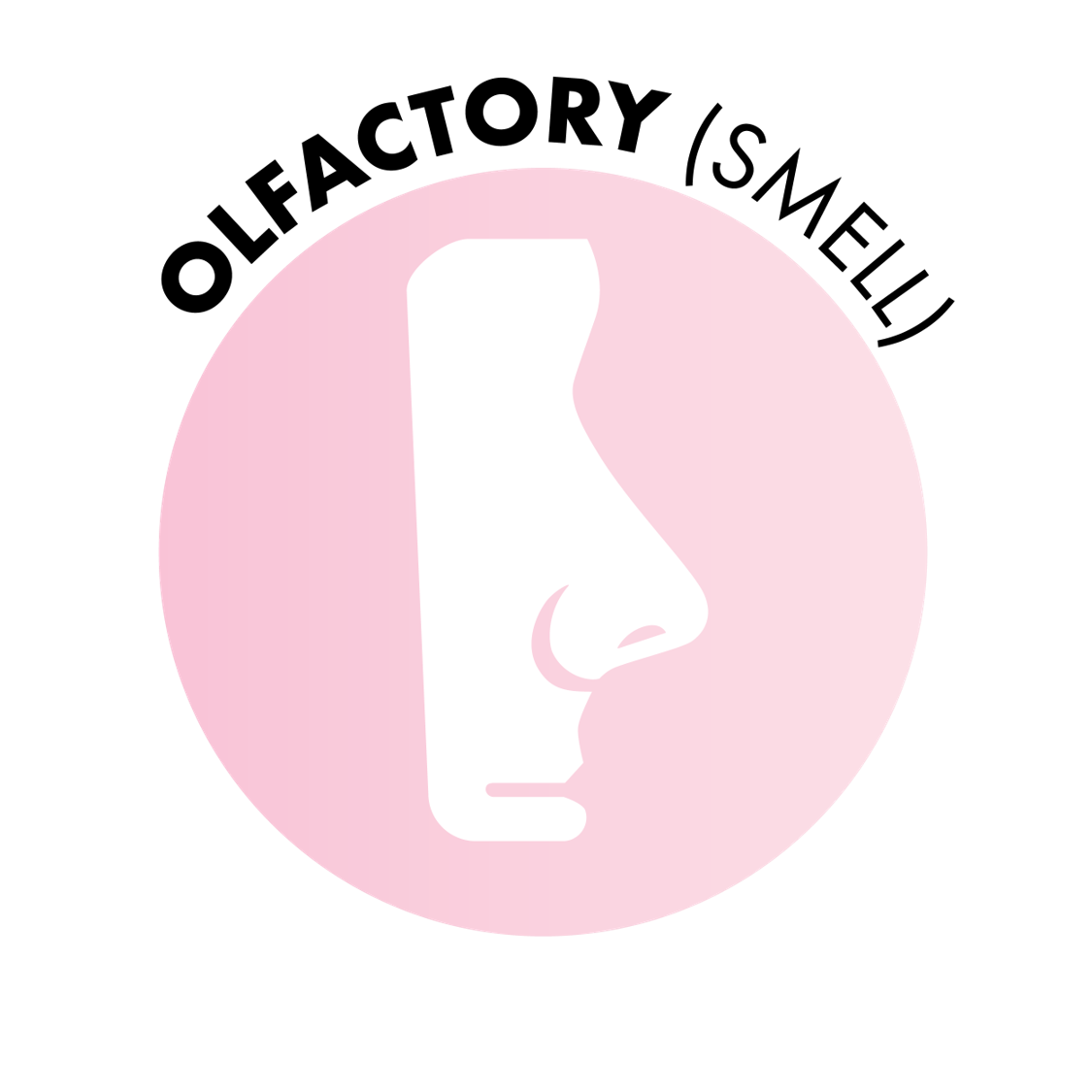 |  | LEARNING THROUGH TASTE - GUSTATORY PROCESSING AND LEARNING THROUGH SMELL - OLFACTORY PROCESSING |
OVER responsive state-
over-registering sensory information, responding with sensitivity, avoidance, defensiveness, fight/flight/fright or freeze
over-registering sensory information, responding with sensitivity, avoidance, defensiveness, fight/flight/fright or freeze
This student may:
| VF | F | S | N | ||
| 117 | be fussy about food: texture and/or taste (e.g. may eat only one type of food). This student may eat a limited variety (e.g. only white foods or only crunchy foods). | ||||
| 118 | avoid certain tastes or smells or not eat if different foods are touching on the plate (as a protective fright/flight/fight response). | ||||
| 119 | be afraid of trying new foods | ||||
| 120 | notice smells and be affected by them more than others | ||||
| 121 | have a strong gag reflex (e.g. to tastes, smells or textures) | ||||
| 122 | avoid people/places/items that have strong perfumes, cleaning products or cooking smells. |
UNDER responsive state -
low registration of sensory input, slow or low response, "zoned out"
low registration of sensory input, slow or low response, "zoned out"
This student may:
| VF | F | S | N | ||
| 123 | not notice food left in mouth. | ||||
| 124 | seem to "forget" to chew or swallow. | ||||
| 125 | not notice strong flavours (e.g. be able to eat chilly or salty food more than others). | ||||
| 126 | have poor saliva control and/or drool (due to poor tactile sensory feedback around mouth and/or low muscle tone). | ||||
| 127 | not notice smells (e.g. soiled nappy, body odours or cooking etc.). |
Seeking the zone -
seeking/craving sensory input to calm down or increase alertness or to maintain a focussed state
seeking/craving sensory input to calm down or increase alertness or to maintain a focussed state
This student may:
| VF | F | S | N | ||
| 128 | stuff mouth with food (this could be for better oral-motor control through enhanced sensory feedback -it's easier to control a large piece of food rather than a tiny crumb in your mouth). | ||||
| 129 | frequently seek or crave food or something in their mouth (e.g. may chew on collar, clothing, nails, or item they are holding). | ||||
| 130 | seek to eat/drink more when they should be full. | ||||
| 131 | seek to lick, taste or mouth non-food items (e.g. pencils, plastic, rocks, sand, leaves). This could be a form of exploration or be related to a Biomedical issue or mineral imbalance such as a zinc or magnesium deficiency. | ||||
| 132 | seek out some smells by sniffing, notices smells more than others. | ||||
| 133 | may be drawn to certain smells more than others (e.g. body odour, faeces, urine, shampoo). | ||||
| 134 | crave eating particular flavours or textures (this could be to alert themselves or because it brings them pleasure). | ||||
| 135 | explore items, places or people by smelling them. |
Note:
1. Mouthing can remain the primary mode of exploration and learning for some students who are diagnosed with developmental delay.
2. The rhythmic movement of the jaw when chewing can regulate breathing and have a calming effect. It is often an effective strategy.
3. Smells are strongly connected to emotions and levels of alertness. Fragrances can impact mood and emotions.
1. Mouthing can remain the primary mode of exploration and learning for some students who are diagnosed with developmental delay.
2. The rhythmic movement of the jaw when chewing can regulate breathing and have a calming effect. It is often an effective strategy.
3. Smells are strongly connected to emotions and levels of alertness. Fragrances can impact mood and emotions.
This checklist is a guide for teachers. Please consult an Occupational Therapist specialising in sensory processing challenges for formal assessment and intervention of your students with complex needs.
Notes
Overall Notes
Please Click on Evaluate to see graphs of the items you have selected for each sensory system.
Click on Print and navigate to PRINT TO PDF or SAVE AS PDF in your print menu to save this checklist on your device.
Refer to the video tutorial "Sensory Lens and ITZ checklist" and "ITZ Strategy Toolkit" for more information.
Click on Print and navigate to PRINT TO PDF or SAVE AS PDF in your print menu to save this checklist on your device.
Refer to the video tutorial "Sensory Lens and ITZ checklist" and "ITZ Strategy Toolkit" for more information.
 PROPRIOCEPTION – position and awareness of the body |
 TACTILE PROCESSING - touch |
 VESTIBULAR PROCESSING - movement |
 AUDITORY PROCESSING - sound |
 VISUAL PROCESSING - visual information |
  GUSTATORY and OLFACTORY PROCESSING - taste and smell |
General notes, questions or thoughts for your student’s IEP: